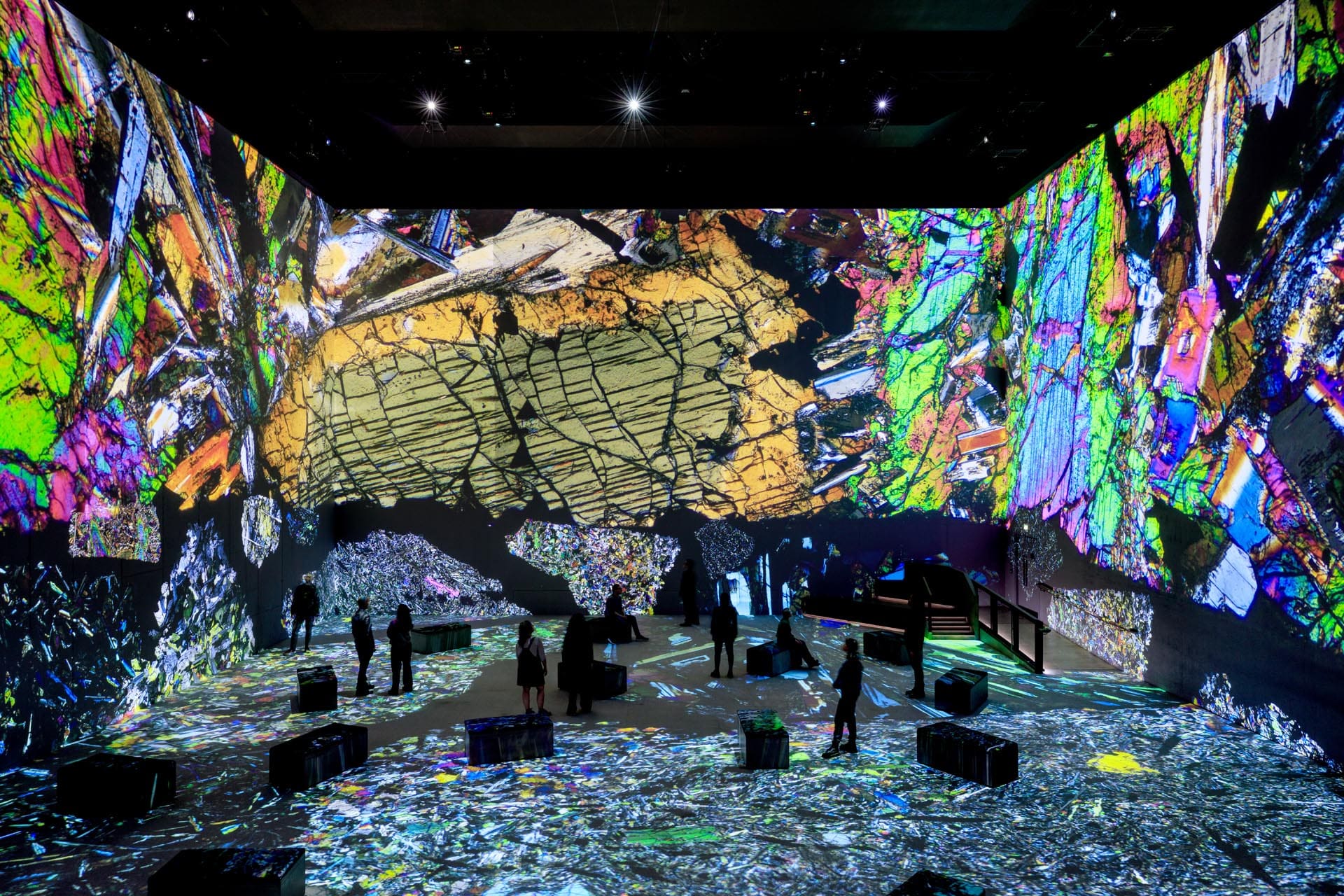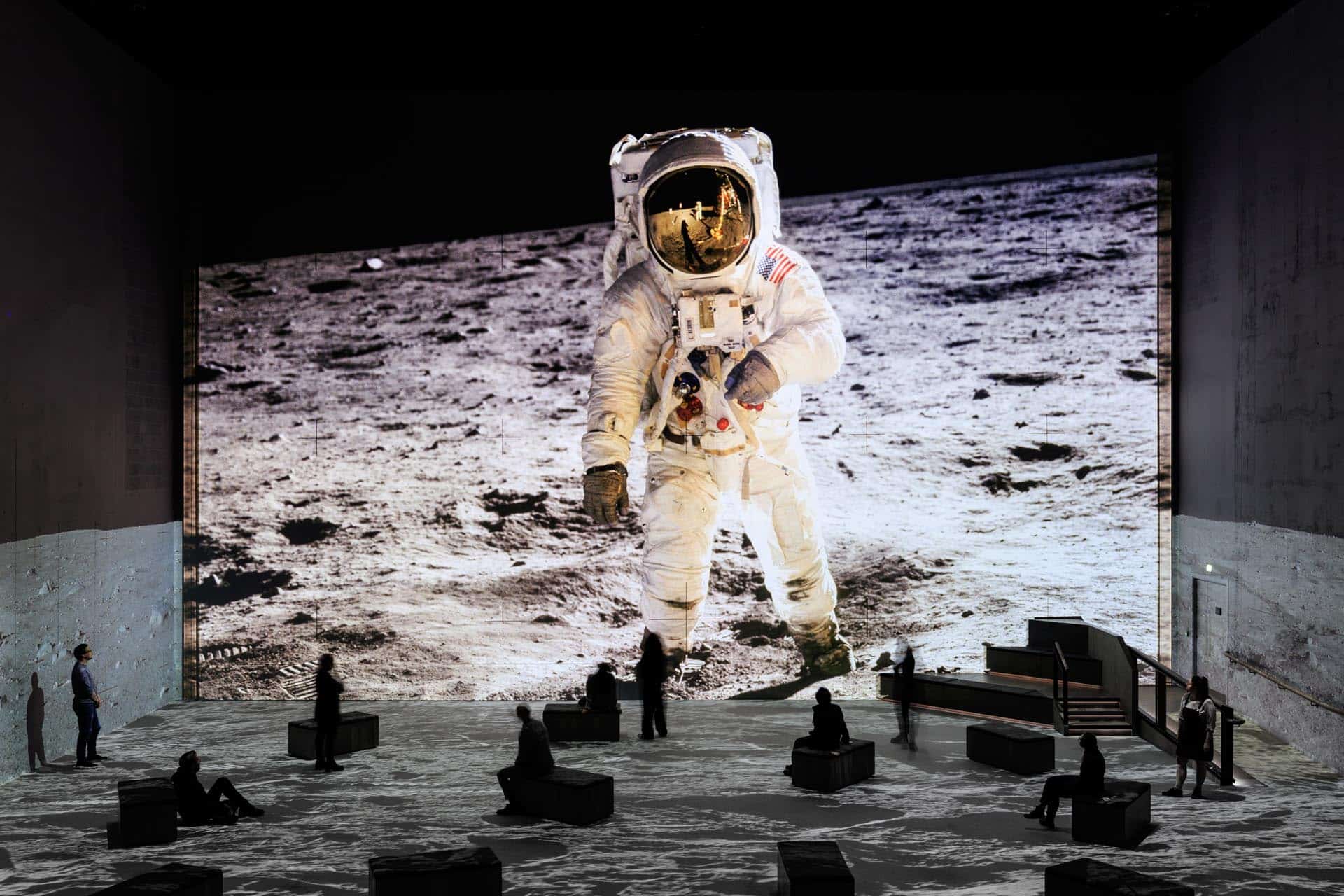Tom Hanks co-wrote The Moonwalkers with Christopher Riley, the double BAFTA-nominated writer-director known for his films and television programmes about space for the likes of the BBC, Netflix, and PBS. The result is a stimulating and engaging history lesson assisted with original NASA footage that the astronauts captured on Earth’s only natural satellite.
Out of this world experience
The incredible footage is definitely worth seeing on the massive 360-degree screen of The Lightrooom in King’s Cross. A big hit last year with its debut exhibition, David Hockney: Bigger and Closer and now presents its latest engrossing, uplifting, and technically flawless 50-minute show narrated by the unmistakable voice of Tom Hanks.
Thanks to high-res imagery and footage projected on all the walls and floor of the four-storey-high space, Lightroom brings a cinematic experience with an extra dimension. In some parts, it feels like you are sitting on the Moon. Considering the footage is from the 1960s it looks remarkably clear, due partly to the vacuum of space and therefore no dust or particles in the air.
Tom Hanks mentions that the room you’re in is about the size of Houston’s mission control for the first moon landing. Visitors are free to move around for different perspectives of the film, including the balcony area at the top.
Perfect for space film lovers
Tom Hanks, a huge Apollo enthusiast, played Jim Lovell in the 1995 American space docudrama Apollo 13. Ironically that particular mission never made it to the moon and was nearly a fatal disaster. The Hollywood actor also produced the HBO miniseries ‘From the Earth to the Moon’ and co-wrote the IMAX film ‘Magnificent Desolation: Walking on the Moon 3D’. For this project Hanks provides the voice-over, accompanied by a soundtrack composed by esteemed Anne Nikitin.
Hanks reminds us that it’s been more than 50 years since humans walked on the Moon. The final flight of the Apollo program successfully concluded on December 19, 1972.
Humanity’s finest achievement
It took astronauts about four days to reach the Moon and that the dust collected from the surface of moon is 40 million years old. The descriptions of the astronauts handling moon rocks composed of matter unchanged over three-and-a-half billion years – a prehistoric time scale – are awe inspiring.
Viewers are shown the depth of Moon craters using impressive comparisons with famous landmarks. For example, Linné crater has a diameter of 2.2km and a depth of 550m — about the same as the Statue of Liberty placed on top of the Empire State Building. You can also learn about lunar rovers and Moon mementos like the one when Apollo 16 astronaut Charles Duke left a framed family photo on the Moon’s surface or the aluminium sculpture dedicated to the fallen astronauts.
A thrilling journey beyond Earth
But the story of Moon exploration isn’t over. The film sheds some light on the planned Artemis programme, which will send the next astronauts around the moon in November in preparation for another landing in 2026, more than 50 years after the last person set foot on our nearest celestial neighbour. And who knows maybe the next chapter of humanity’s achievement is just around the corner?
“The Moonwalkers: A Journey With Tom Hanks” shows until June 9. Tickets and more information can be found here.
Image credits: © Justin Sutcliffe










